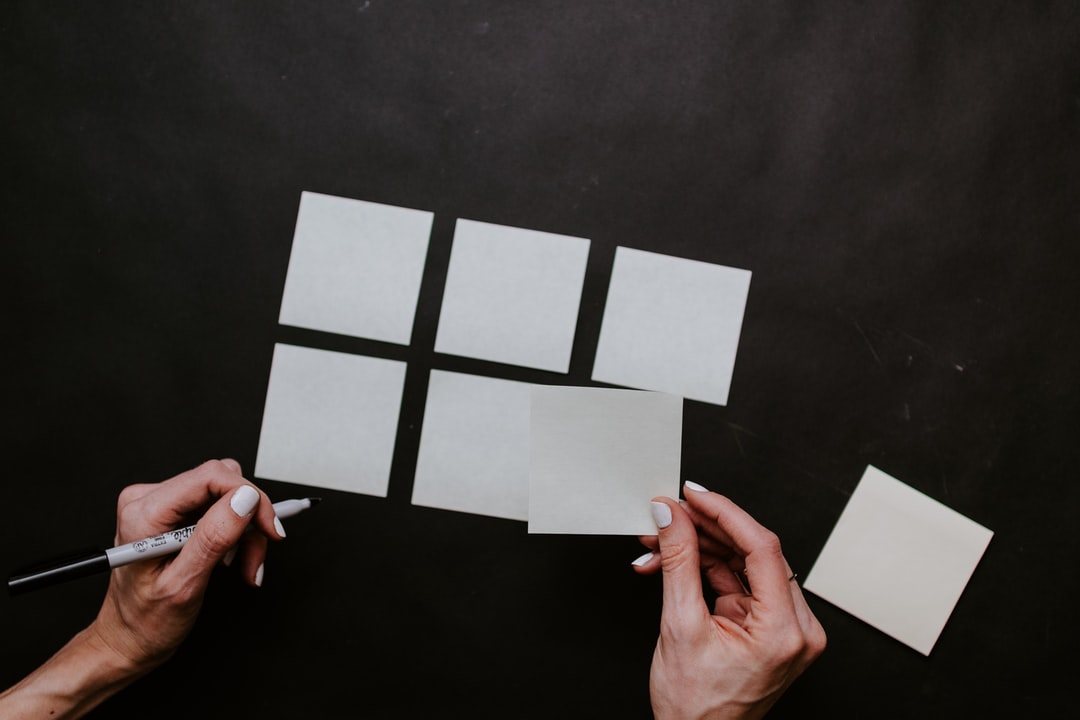This section explains how to study to achieve your goals in an efficient manner.
So far, we have introduced the timing of the review.
- How often do I need to review to remember effectively?
- How much time should I allow for reviewing from the time I first learned the material so that I can remember it more efficiently?
So far, we have explained how effective distributed learning is compared to centralized learning.
In this article, I will show you how to use memorization cards using that distributed learning.
The more sheets, the better I remember!
The dispersion effect of “it's good to review after a while” is useful in a completely different learning situation.
That is when you use “memorization cards”.
Memorization cards are useful for remembering word meanings, kanji characters, historical years and things, math formulas, and so on.
Let's say you want to make three memorization cards to memorize 20 newly learned English words.
You would write the English words on the front of the card and the Japanese translation or example sentence on the back.
How can I remember the contents of this card well?
The simplest way is to study all three cards by repeating them.
But you might think that three at a time is too many, and that it will make your head spin.
In such a case, you might pick out some of the three cards to study, and when you are done, pick out some other cards to study again.
Here's a question.
Which method would be more efficient?
The only difference is that you can study more or fewer cards at a time.
Let's take a look back at the dispersion effect introduced so far: “It is good to review after a short pause.
If this rule also applies to memorization cards, then the more memorization cards you study at one time, the better.
The reason is that when you study a large number of cards repeatedly, the interval between encountering a certain card becomes longer.
It may sound like it would be better to use fewer sheets and learn each one well, but in reality, this is not the case.
Here is an experiment that led me to this surprising conclusion.
Kornel, N. (2009) Optimising learning using flashcards: Spacing is more effective than cramming.
How can I memorize the contents of the memorization cards more efficiently?
Experimental Methods
The task of the participants in the experiment was to memorize 40 memorization cards with difficult words on the front and their meanings on the back.
For each participant in the experiment, we divided the cards into groups of 20 and tried different ways of studying them.
In [Method 1], we studied 20 cards per day, repeated twice.
I continued this for four days.
In [Method 2], another 20 cards were divided into 4 groups (5 cards each).
Then, I studied one group of cards (five cards) every day, repeating them eight times.
Over the course of four days, I studied all four groups of cards.
Since both methods require a total of 40 cards to be studied per day, the study time for [Method 1] and [Method 2] is exactly the same.
On the fifth day, we reviewed all 40 cards.
On the sixth day, they gave a test to see how well they remembered the meanings of the words.
Also, after the first day of studying, we gave them a questionnaire to predict how well they would do on the test.
experimental results
In the questionnaire, [Method 2] was more popular than [Method 1].
However, the test scores of [Method 1] were almost twice as high as those of [Method 2].
consideration
The experiment showed that the participants expected to get a better score on the test if they memorized five cards at a time.
However, when the test was actually conducted, the test scores were higher for those who studied three cards at a time.
This experiment taught me that the dispersion effect of “pause is good” also applies to memorization cards.
Another important point is that the dispersion effect is not intuitive.
It's not intuitive, which is why we should use the results of these experiments to test the effects of dispersion.
What you need to know in order to study efficiently
- The dispersion effect is counterintuitive. That's why we should actively try to incorporate it.
- Don't be afraid to increase the number of memorization cards you study at a time!



